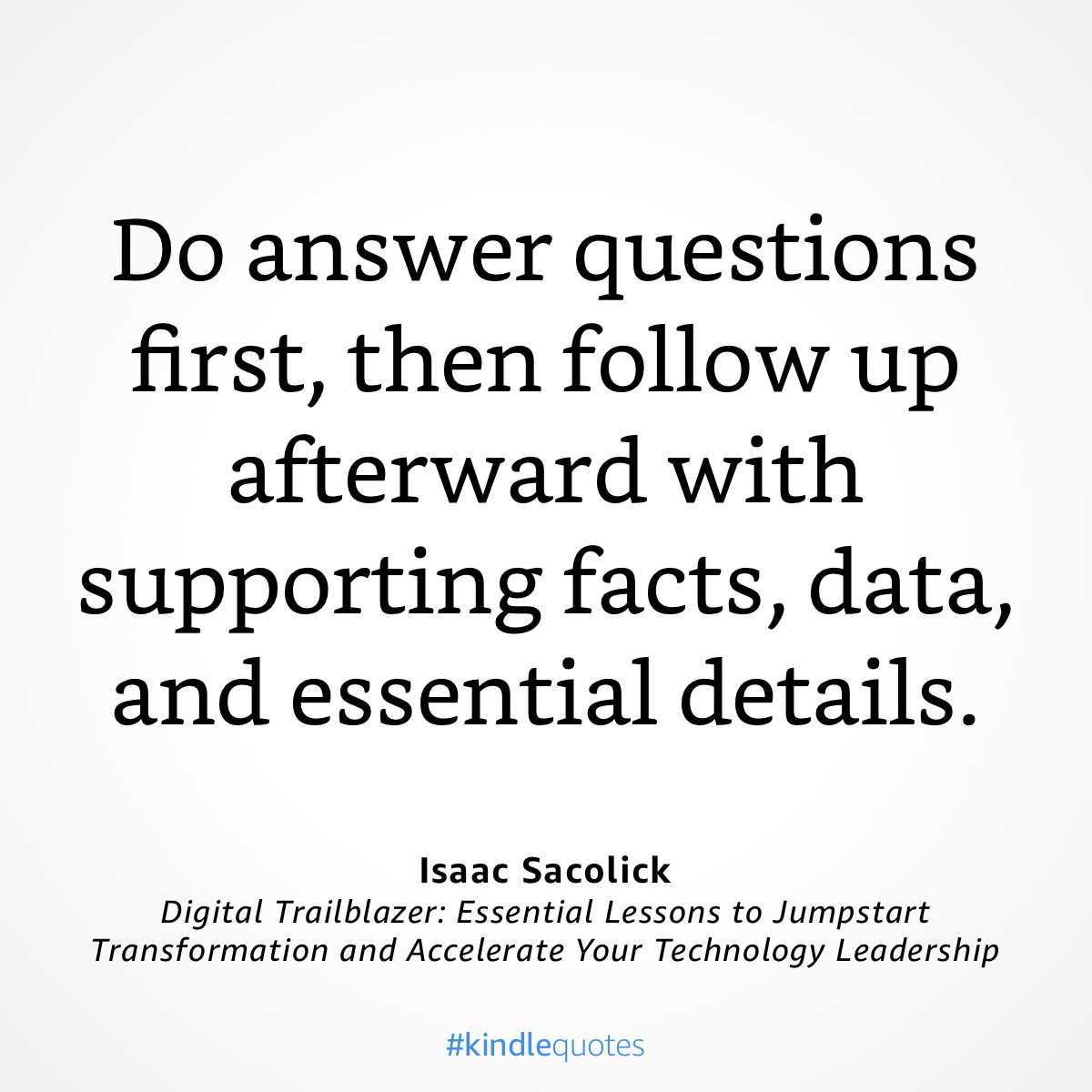At some point in your career, you’ll be handed the microphone and asked to deliver a presentation for a big investment. You may be a product manager looking to develop a new product offering, a data scientist seeking additional funding to experiment with large language models (LLMs), or a DevOps engineer seeking buy-in for a new AIOps platform. Whether it’s your first big pitch or you’re a veteran presenter, you know that successful investment presentations require preparation.
I’ve done my fair share of pitches for investments and presentations to get program approvals. I’ve won some and lost some. Business decisions aren’t in your control even if you have a “seat at the table,” but how you prepare for the presentation can increase your odds.
I won’t get into presentation formats, templates, and what level of detail
to include as this differs by organization, industry, and what you’re
pitching. I think the process should start with a
vision statement, but when you’re ready to ask for a sizable investment, you’ll need
details on the target outcomes, business strategy, architecture of the
solution, a plan, and a budget. Some organizations want a lot more than
these basics.
Whether you’re presenting a 3-page pitch or a 30-page investment dissertation, you’ll need to decide what material to show and prepare for the presentation. Below are my tips for fearless Digital Trailblazers ready to pitch an investment toward a digital transformation initiative.
Pitch like you’re investing your own money
In chapter 9 of
Digital Trailblazer, I share one story of pitching a big idea. Here’s a snippet:

It’s much easier to present a product development process when investing other people’s money. But when it comes out of the executive bonus pools, or if it prevents the leaders from hiring people to make their lives easier, they’re likely to be much more conservative with spending money on longer-term investments.
Most organizations cannot invest in moonshots and have finite resources for
new programs. Decision-makers are well aware that money committed to one
program impacts other opportunities, and that’s one concern floating in
their minds when investments are presented to them.
So what should you do? Be practical, and more importantly, demonstrate to
decision-makers that you have realistic ambitions. Break down big or
long-term plans into an
MPV
and a
roadmap, then ask for investment to cover the initial releases.
I bring up this issue first because the scope of your investment request is
a key area to decide on before working on the rest of the
pitch.
Begin with projected business outcomes and target customers
Decide on the budget first, but present these investment details at the end
of the pitch. When presenting to executives, provide the answers first, then
go into supporting detail.

I share this advice in
Digital Trailblazer, “Do answer questions first, then follow up afterward with supporting
facts, data, and essential details.”
For executives, the question they want you to answer upfront concerns the
business outcomes, including financial impacts and customer benefits. Here
are some examples:
- “We’ve conceived a new way for our most lucrative customers to connect with us while on the go and believe this can generate a 7% increase in revenue from this segment.”
- “We’ve tested a generative AI with athletic patients and found 70% would be more likely to visit one of our care institutions compared to others in their neighborhood if the capability enabled a more personalized experience.”
- “A fully deployed AI operations solution would reduce the time it takes to resolve poor performance of our B2C ecommerce channel, estimating to save $X yearly.”
These are simple opening statements, and your goal is to get their attention by answering why the investment and who benefits well before getting into details on the what and how. In more conservative organizations, you’ll need to detail the level of investment upfront by adding something like, “We’re asking to invest $Y over $Z to meet these objectives,” but leave any other details to the budget slide or Q&A.
Prepare to answer what’s in it for them
Practicing the presentation is important but not as vital as being ready to
answer executives’ questions.
 Here’s why: Most executive pitches go into Q&A within the first few
slides, especially if the material is shared with decision-makers before the
presentation. Many executives want a discussion, not a pitch or a speech.
Even though you have a deck ready, plan for a dialog that sometimes feels
like their questions are darts thrown at you.
Here’s why: Most executive pitches go into Q&A within the first few
slides, especially if the material is shared with decision-makers before the
presentation. Many executives want a discussion, not a pitch or a speech.
Even though you have a deck ready, plan for a dialog that sometimes feels
like their questions are darts thrown at you.
You have to prepare like seasoned salespeople, and they know a few things
about pitching investments.
- Know your audience, especially their decision-making behaviors. Are they conservative or willing to take risks? Are they supportive of technology benefits or fearful of change? Do they have any biases toward specific businesses, products, or segments? Most importantly, think about the decision from their perspective and understand what’s in it for them. If you can’t answer that question, you might face a detractor who weighs investment value through their narrow value lens and how it impacts them.
- Avoid jargon and explain technologies in basic terms and minimal terminology. Answering tech questions during a pitch is a rabbit hole, and you can waste valuable time answering them. In Chapter 1 of Digital Trailblazer, I contemplate answering a board director’s question with a technical answer. “But if I answered the question that way to the board of directors, I would be shown the virtual elevator down to the CTO morgue. That is where geeks with ties go when they can’t explain technical concepts in simple language.” When presenting to executives, it’s not an AIOps solution, say AI Operations, and there’s no need to say large language model, or worse, LLM, just call it a generative AI like ChatGPT based on the company’s data.
- Anticipate questions and practice your answers. More importantly, think through the objections that might turn darts into boulders. The best salespeople rehearse questions and objections and prepare for whatever their audience throws at them.
My final piece of advice is to have fun and enjoy the moment. It’s easy to
get stressed pitching the big idea, but you’ll find a much more receptive
audience if you’re relaxed and confident. And if you swing and miss, you’ll
find more opportunities to improve your pitch at your next at-bat.
If you’re pitching to the board of directors, consider reading my recent article on CIO.com about five key mistakes IT leaders make at board meetings.
Join us for a future session of Coffee with Digital Trailblazers, where we discuss topics for aspiring transformation leaders. If you enjoy my thought leadership, please sign up for the Driving Digital Newsletter and read all about my transformation stories in Digital Trailblazer.



No comments:
Post a Comment
Comments on this blog are moderated and we do not accept comments that have links to other websites.